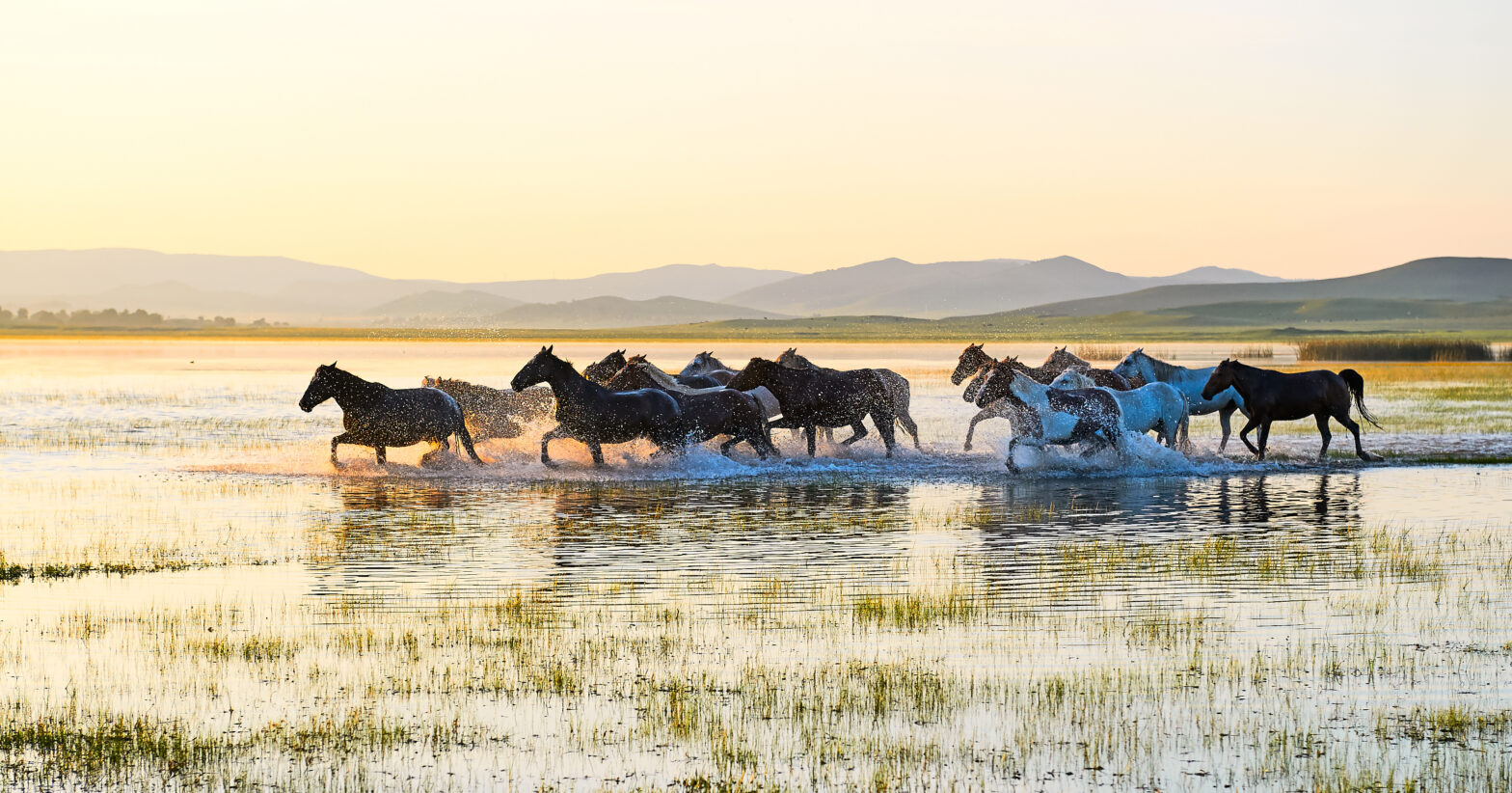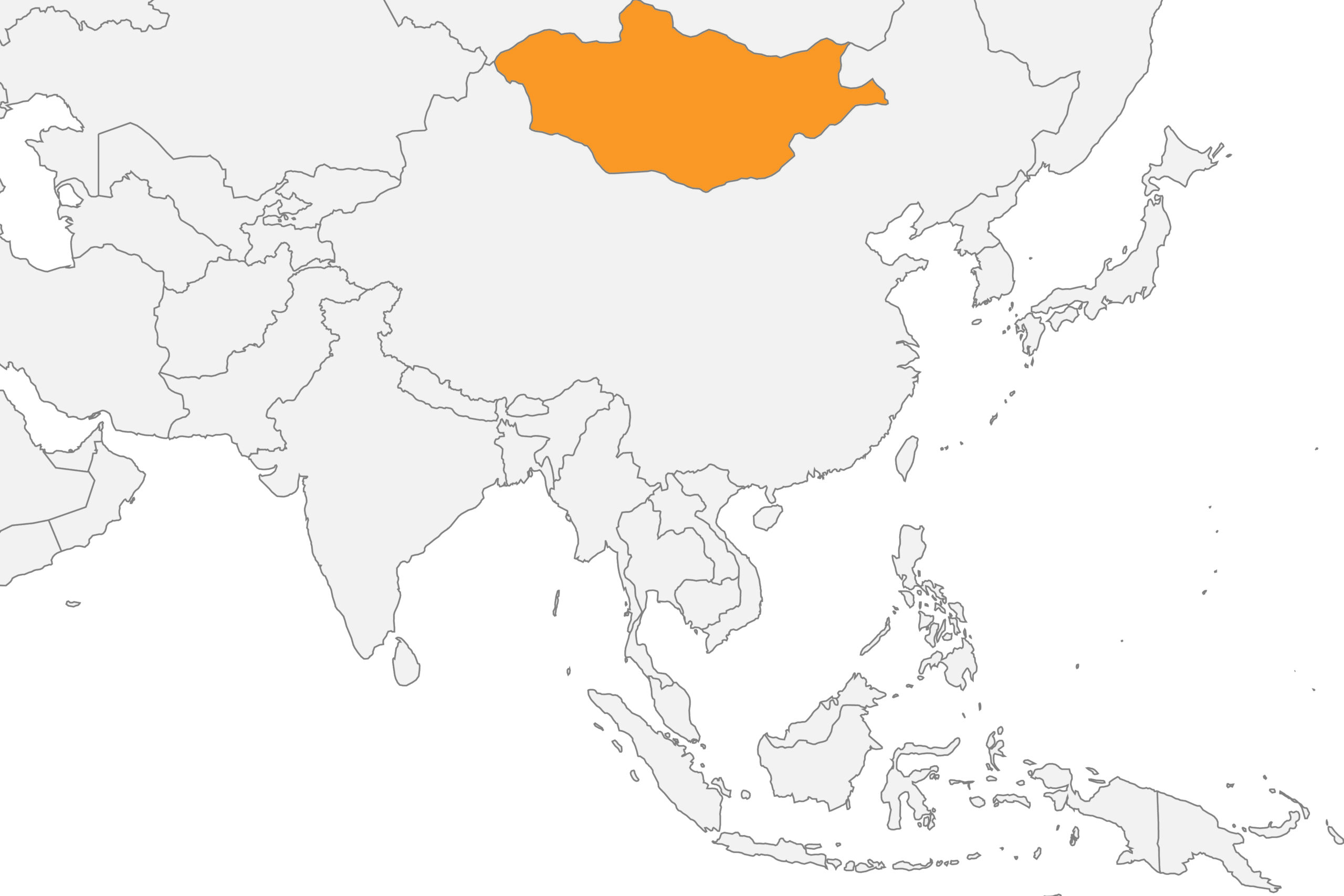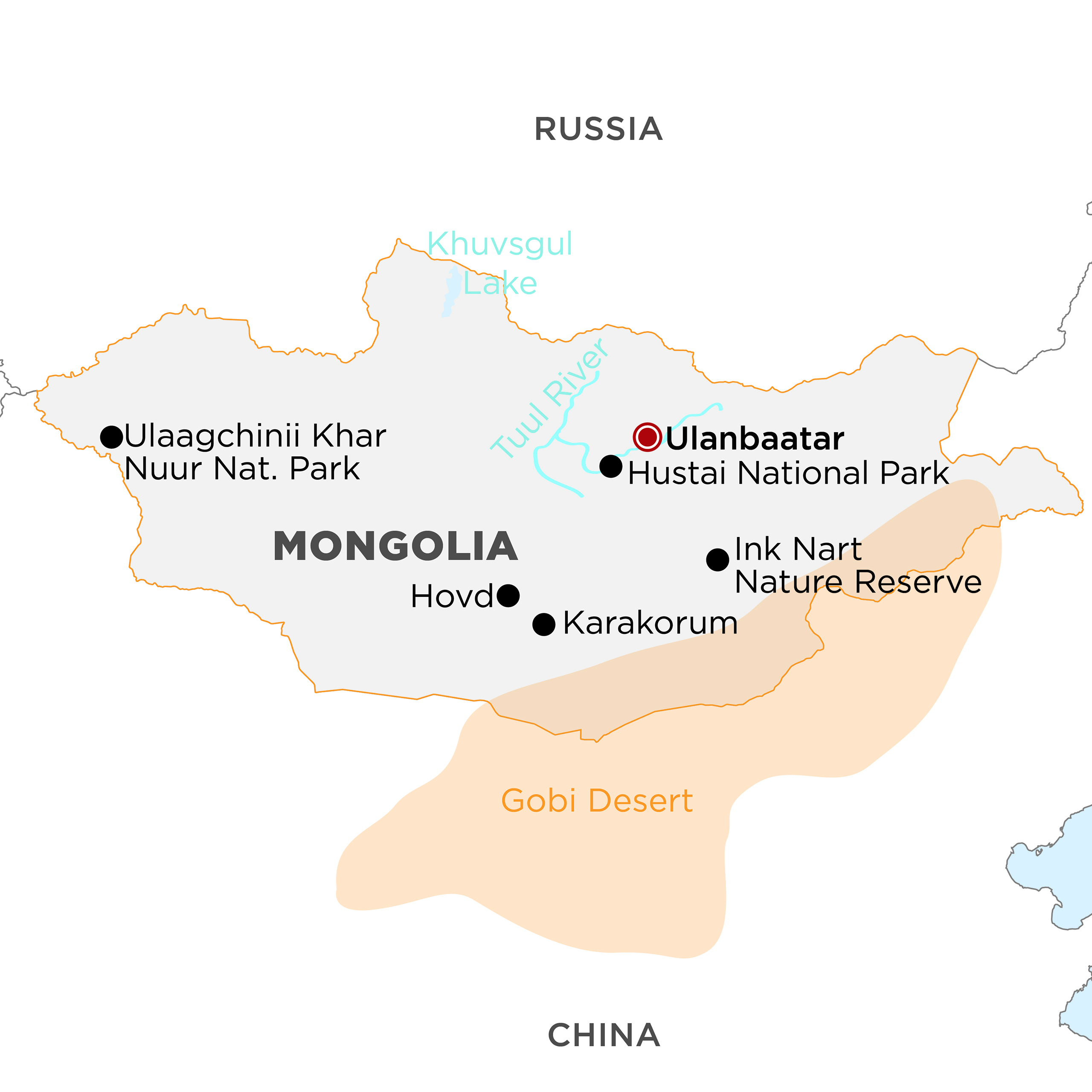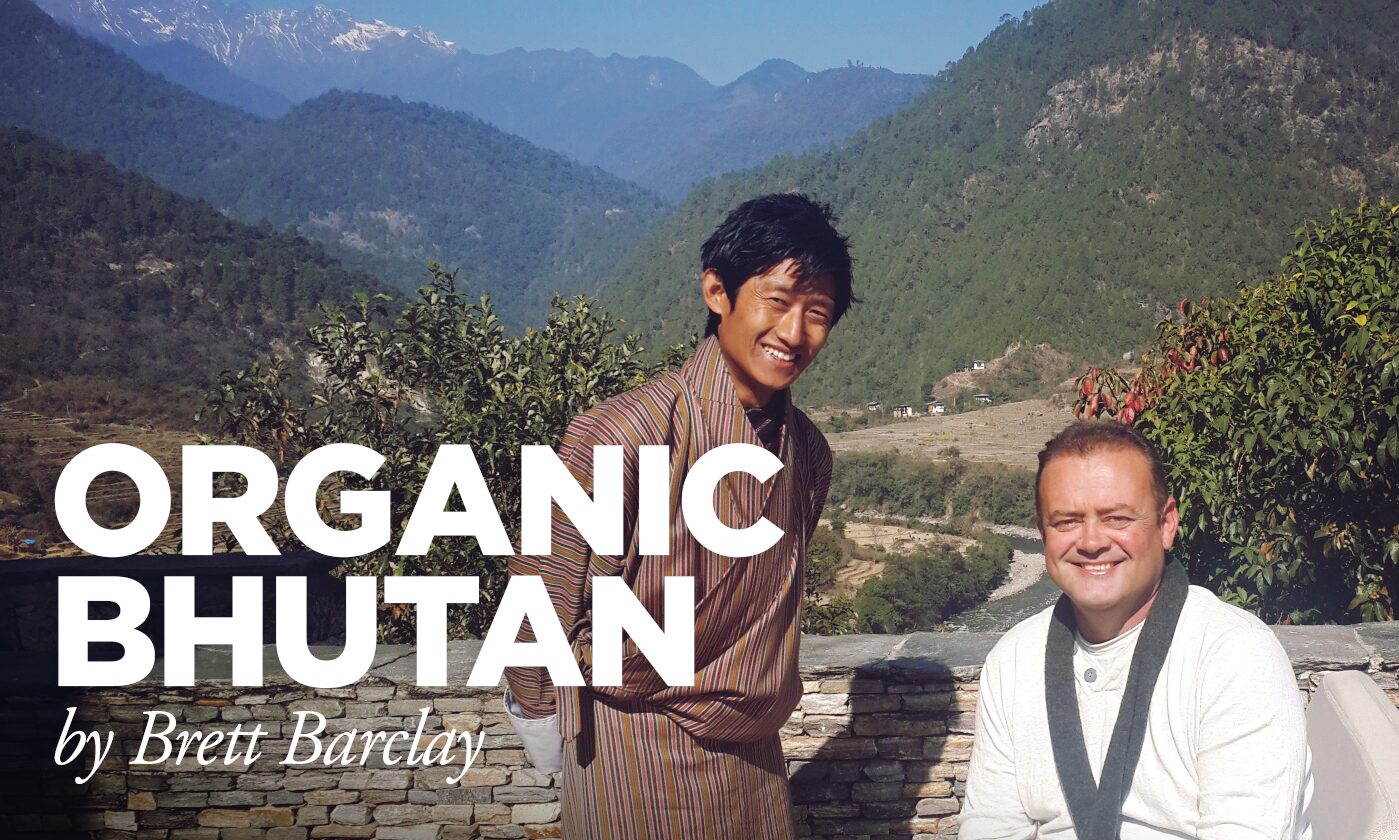Mongolia
Known as the "Land of Blue Skies", Mongolia is a landlocked country situated between Russia and China which has a unique landscape of vast rugged scenery.
While it may be the 18th largest country in the world, its small amount of citizens makes it the most sparsely populated. Experience the truly nomadic life of Mongolia's wild west by exploring remote national parks, connecting with the communities, learning about their lifestyle, preparing local food and sighting unusual wildlife. Nomadic traditions are still very much a way of life in Mongolia which is a big part of the attraction for visitors who enjoy warm welcomes from the locals.
Read More...Gobi Desert
The Gobi is a general description of the South of the country and not a complete desert as often perceived. It actually holds 33 different eco-systems of which only three percent is sand! It is known for its dunes, mountains and rare animals including the fascinating snow leopard.
Hustai National Park
A land of arid steppe, forest and gentle slopes located just a few hours by car west of Ulanbaatar, it his home to Mongolia’s last remaining population of wild horses. The Tuul river, one of Mongolia’s largest rivers, runs through the park, flanked by riverine willow forests. The park, which is also known as Khustain Nuruu National Park offers travellers fabulous hiking through unspoiled wilderness and opportunities to see the gorgeous wild horses and other wildlife including large birds such as falcons and eagles.
Ulanbaatar
Also known as Ulan Bator or UB for short is located on the Tuul River the city is the capital of Mongolia where Soviet-era buildings survive next to modern apartment blocks and lifestyles.
Ink Nart Nature Reserve
Covers an area of around 66,000 hectares of grassland and semi-desert steppe environments which is home to one of the last remaining populations of Argali Sheep. The reserve is also home a wide diversity of flora and fauna species including 33 mammals, 6 reptiles, 125 birds and over 200 plants.
Baldan Bereeven Monastery
A Buddhist monastery which grew to be one of the largest and most important in Mongolia at its height in in the mid 19th century housing up to 800 monks. The grounds are surrounded by beautiful sacred mountains.
The best time to visit is between May and October, as Mongolia’s severe winters can make it impossible to venture outside of the capital at other times.
“Beware the mutton” I was told. Not quite the travel advice you’re expecting when setting out on a new adventure, but my friend was right. Mutton formed the large part of every meal I had in Ulan Bator, with varying degrees of palatability. That aside, I adored Mongolia! Ulan Bator itself was a vision of Soviet-era architecture, with traditional Mongolian yurts on the outskirts. I loved seeing the locals dressed in their traditional clothing, complete with beautifully embroidered felt boots, their tips turned skywards. Totally authentic, this wasn’t for tourists, it was indeed their every day wear. My journey aboard the Trans-Mongolian Railway took me across the vast steppes, spotting the occasional nomadic settlement en route. I was travelling in autumn when the land was as barren as it was endless, but I believe in summer it’s lush and green. We’d stop at tiny little stations seemingly in the middle of nowhere and a few wide-eyed locals would hop aboard or sell postcards through the windows. Mongolia seemed full of tradition and not quite adjusted to the modern day, but possibly because of that, it was a truly authentic and fascinating place to visit.
Caroline Clegg, Marketing Manager
Currency Mongolian tughrik
Language Mongolian is the official language, while Kazakh and Tuvan are also spoken in the west of the country. Russian and English are the most commonly spoken second languages.
Weather The majority of the country is hot in summer and extremely cold in winter. In January, the average temperature has been known to drop to -30°C! June and July are warm and mostly dry, while August is a bit colder and features more rain. In the shoulder months, May and September, the weather is more changeable and some traditional yurt camps may be closed. The rest of the year (October to April) is the low season, due to very low temperatures, but activities like dog sledding, skiing and ice skating become available.
Social customs and quirks If you are visiting temples, monasteries, or other religious sites, it’s good to remember some of the local etiquette – walk clockwise around stupas or prayer wheels, dress modestly with long sleeved clothing, remove hats, sunglasses and shoes before entering religious buildings, and don’t touch prayer flags or other items of religious significance. If you aren’t sure if photography is allowed then it’s best to ask, and if there are signs requesting no photography, respect them. It’s customary to receive gifts/objects with your right hand. Haggling isn’t a big part of life in Mongolia, however some is acceptable at markets. While ATMs and credit cards are becoming more accepted in Ulaanbaatar, most of the country is largely cash-based, so bring some local currency with you.
Festivals and events Naadam festival is celebrated each summer in most towns and villages across the country, the biggest being in Ulaanbaatar. People wear traditional dress and watch others compete in archery, wrestling and horse racing. According to tradition, only men can wrestle, both men and women participate in archery, and children are jockeys for the horse races. The two annual Eagle festivals allow people to learn more about the ancient art of falconry, practiced for millennia by the Kazakhs in the west. Mongolian New Year (Tsagaan Sar) is celebrated between late January and late February with a feast of traditional dairy products, rice with curds, Mongolian dumplings (buuz), and cookies stacked high.
Health* There are currently no health requirements entering Mongolia however some vaccinations may be recommended by your doctor.
Notes *Please be aware that Health information is subject to change at any time and you should always double check these requirements at the time of booking and before travel.




